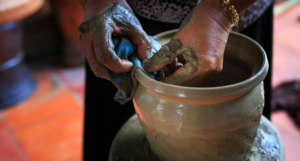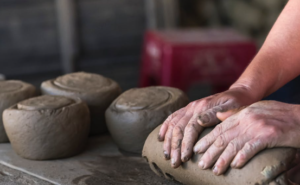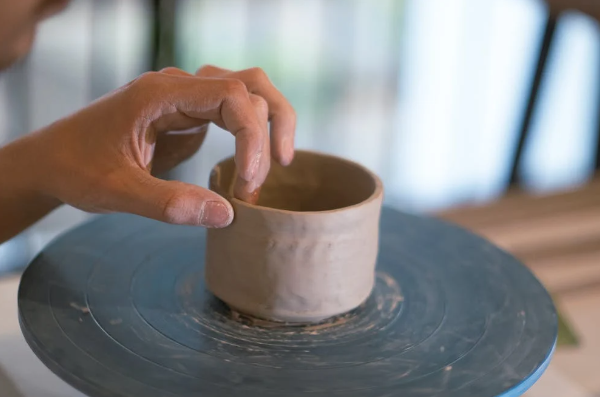Table Of Contents
- 1 Diving into Polymer Clay Sculpting Techniques for Beginners
- 2 Unveiling the Foundational Techniques of Polymer Clay Sculpting
- 3 Session 3: Crafting Your First Polymer Clay Masterpiece
- 3.1 1. Choosing Your Project:
- 3.2 2. Gathering Your Materials:
- 3.3 3. Shaping and Sculpting:
- 3.4 4. Blending and Smoothing:
- 3.5 5. Adding Texture and Details:
- 3.6 6. Baking Your Creation:
- 3.7 7. Finishing Touches:
- 3.8 1. Mastering Complex Shaping Techniques:
- 3.9 2. Combining Techniques for Enhanced Realism:
- 3.10 3. Enhancing Details and Features:
- 3.11 4. Experimenting with Glazes and Sealers:
- 3.12 5. Pushing the Limits of Polymer Clay:
Diving into Polymer Clay Sculpting Techniques for Beginners
Welcome, aspiring sculptors! Today, we embark on a journey into the captivating world of polymer clay sculpting. Unlike air-dry clay, which requires patience and waiting for the clay to dry, polymer clay offers remarkable flexibility as it remains moldable until you bake it. This allows for greater control and detailed sculpting, perfect for bringing your artistic visions to life.
What is Polymer Clay?
Polymer clay is a versatile material made of polymer resins, plasticizers, and pigments. It comes in a vast array of colors and textures, offering endless possibilities for creative expression. Unlike traditional clay, it requires baking in an oven to harden, allowing for adjustments and revisions until you achieve the desired result.
Benefits of Polymer Clay Sculpting:
- Flexibility: Polymer clay’s malleable nature allows for intricate sculpting and detailed work.
- Variety: With numerous colors, textures, and brands available, the possibilities for creative expression are limitless.
- Control: You have complete control over your creation until you bake it, allowing for adjustments and revisions.
- Durability: Once baked, polymer clay becomes strong and durable, making your sculptures long-lasting treasures.
- Accessibility: Polymer clay is relatively affordable and readily available at craft stores and online retailers.
Essential Tools for Polymer Clay Sculpting:
- Sculpting tools: A basic set of sculpting tools like knives, spatulas, and brushes will help you shape and refine your clay.
- Rolling pin: Use this to flatten the clay evenly for creating flat shapes or textures.
- Texture mats: Add interesting textures and patterns to your sculptures with these versatile mats.
- Needle tool: This comes in handy for creating small details and delicate features.
- Oven: Baking is essential for hardening your polymer clay creations.
- Parchment paper: Line your baking tray with parchment paper to prevent sticking and ensure smooth baking.
Join us in the next session as we unlock the secrets of fundamental polymer clay sculpting techniques, equipping you with the knowledge and skills to craft captivating sculptures.

Unveiling the Foundational Techniques of Polymer Clay Sculpting
Now, let’s delve deeper into the core techniques that will pave your path to polymer clay mastery:
1. Conditioning the Clay:
Before you begin sculpting, it’s crucial to condition your polymer clay. This process warms and softens the clay, making it more pliable and easier to work with. You can condition your clay by kneading it with your hands or using a pasta machine.
2. Basic Shaping Techniques:
- Pinching: This technique involves pinching the clay between your fingers to create basic shapes like spheres, ovals, and cones.
- Rolling: Use a rolling pin to flatten the clay evenly for creating flat shapes or textures.
- Coiling: Roll out long, snake-like coils of clay and join them together to build larger structures and intricate forms.
- Cutting: Cut shapes from flattened clay sheets using cookie cutters or craft knives.
3. Blending and Smoothing:
For a seamless and polished finish, use your fingers or blending tools to smooth out any rough edges or imperfections. You can also use a small amount of liquid polymer clay to help with blending.
4. Adding Texture and Details:
Use texture mats, stamps, or your own tools to create interesting textures and patterns on your sculpture. You can also add details like eyes, mouths, and other features using sculpting tools.
5. Baking:
Once you’re happy with your creation, it’s time to bake it! Follow the baking instructions on your specific brand of polymer clay, as baking times and temperatures may vary.
6. Finishing Touches:
After baking, you can add finishing touches to your sculpture. This may include painting with acrylic paints, adding glitter or beads, or applying a varnish for extra protection and shine.
With these fundamental techniques under your belt, you can now begin experimenting and creating unique polymer clay masterpieces. In the next session, we’ll guide you through your first polymer clay project, helping you apply your newfound skills and unleash your creativity!

Session 3: Crafting Your First Polymer Clay Masterpiece
Ready to put your newly acquired polymer clay sculpting skills to the test? In this session, we’ll guide you through the process of creating your very first polymer clay sculpture, from choosing a project to shaping, baking, and adding finishing touches.
1. Choosing Your Project:
The possibilities are endless when it comes to polymer clay projects. You can create intricate figurines, decorative bowls, jewelry, or even whimsical sculptures inspired by nature. Start with something simple to get comfortable with the techniques, and as you gain confidence, you can attempt more challenging projects.
2. Gathering Your Materials:
Before you begin, gather the necessary tools and materials, including your chosen brand of polymer clay, sculpting tools, rolling pin, texture mats, a needle tool, an oven, parchment paper, and acrylic paints or other embellishments for the finishing touches.
3. Shaping and Sculpting:
Apply the techniques you learned in Session 2 to bring your vision to life. Use the pinching, rolling, coiling, and cutting techniques to create the basic shapes for your sculpture. Then, use sculpting tools to add details, textures, and features.
4. Blending and Smoothing:
Once you’re satisfied with the basic structure, use your fingers or blending tools to smooth out any rough edges or imperfections. You can also use a small amount of liquid polymer clay to help with the blending process.
5. Adding Texture and Details:
Incorporate texture mats, stamps, or your own tools to create interesting textures and patterns on your sculpture. Use a needle tool to add delicate details like eyes, mouths, and other features.
6. Baking Your Creation:
Follow the specific baking instructions for your brand of polymer clay. Most brands require baking at a moderate temperature for a specific duration. Ensure your sculpture is completely baked through to prevent cracking or warping.
7. Finishing Touches:
Once your sculpture has cooled completely, add finishing touches with acrylic paints, glitter, beads, or a varnish. Paint your sculpture in vibrant colors, or use different shades to create a realistic or stylized effect.
Congratulations! You’ve successfully crafted your first polymer clay masterpiece! Take pride in your creation and share it with friends and family. As you gain more experience, you’ll be amazed at the intricate and captivating sculptures you can create. Remember, polymer clay offers endless possibilities for artistic expression, so keep sculpting, experimenting, and letting your imagination soar!
Session 4: Mastering Polymer Clay Sculpting and Beyond
Congratulations! You’ve come a long way in your polymer clay sculpting journey. In this final session, we’ll delve into advanced techniques to elevate your skills and explore new creative possibilities.
1. Mastering Complex Shaping Techniques:
- Barrel Rolling: Create cylindrical shapes by rolling clay into a log and then flattening one end.
- Taper Rolling: Create tapered shapes by rolling clay into a log and then tapering one end.
- Slab Building: Cut out intricate shapes from flattened clay sheets and assemble them to form detailed structures.
2. Combining Techniques for Enhanced Realism:
- Layering: Combine different colors and textures of clay to create realistic effects, such as fur, skin, or fabrics.
- Shading: Use different shades of the same color to add depth and dimension to your sculptures.
- Texturing and Imprinting: Create realistic textures by using texture mats, stamps, or natural objects to imprint onto your clay.
3. Enhancing Details and Features:
- Precision Sculpting: Use needle tools, ball styluses, or carving tools to add delicate details and refine features like eyes, mouths, and facial expressions.
- Creating Holes: Use a needle tool to create holes for earrings, pendants, or other decorative elements.
4. Experimenting with Glazes and Sealers:
- Glazes: Apply glazes to add shine, color, and depth to your sculptures.
- Sealers: Protect your sculptures from dust and scratches by applying a thin layer of sealant.
5. Pushing the Limits of Polymer Clay:
- Incorporate Found Objects: Use small found objects like beads, buttons, or twigs to add texture and interest to your sculptures.
- Create Assemblages: Combine different polymer clay sculptures to create unique and eye-catching compositions.
- Explore Mixed Media Techniques: Combine polymer clay with other materials like fabric, papier-mâché, or wire to create unique works of art.
Remember, polymer clay is a versatile medium that encourages creativity and personal expression. Keep experimenting, pushing boundaries, and letting your imagination guide you. The world of polymer clay sculpting is your oyster!
